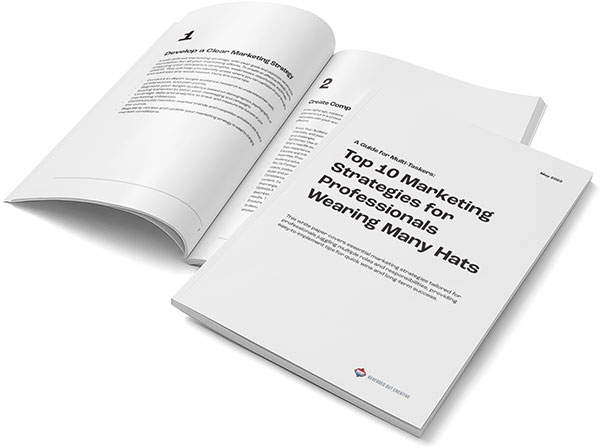
Do you have a website? If so, you would have gone through web designing, creation, and all the other ins-and-outs. Is your website healthy? Are you getting the expected amount of traffic on your website? To know all of this, you need to check if your website is outdated.
Now, let’s take a look at our 11 updated tips that you can use to see if your website is outdated.
1. Mobile Friendly
Is your website mobile friendly? According to a survey, 56% of people open a webpage on a mobile device, so your website should be mobile friendly and should work across all types of devices including computers, tablets, and smartphones.
Let us start by checking out how your site works on mobile.
Mobile Test is a cool tool that will load your site in various mobile device mockups.
You first need to select the device, enter the URL and see your site on numerous smartphones and tablets. Make sure you check the complete website.
It is also important to check how fast your website opens. Test your speed with Google’s test your mobile speed tool. If the speed is fast, then there will soon be a green sign and the webpage will be open.
2. Captivating and Readable Content
Content is king and will be a crucial part of your digital marketing efforts. Clean and legible content gathers more audience than something super complex.
- Create A Clean Copy
Proofreading is inevitable for a clean copy of your content. If you want your website to have a good impression on your audience, then make sure you write clear, clean, error-free content. This will make your website look updated.
- Explain Your Products And Services
If you are selling any product, then the product image and description should be clean. If you are providing any services, then proper knowledge should be given for the services to keep your customer/audience informed.
- Do Not Over Complicate Things
Try not to give unnecessary information on your website as it will make it too complex and will come across as confusing. Nowadays, audiences prefer a simple approach that is relatable and easy to understand.
- Look For Call To Action
Instead of having a “click here” option, give your audience the choice to sign up for a newsletter. They can open the newsletter for exciting offers, and you have the opportunity to tell them why should they use these particular products or services.
All of these points will help you find out if your website is outdated.
3. Speed Of The Site
Speed is an integral part of any website. When your audience visits your site, they do not have the patience to wait for you site to load. If your website won’t open, they will move to another webpage, so speed checkup is a must. Google also takes user behavior and site speeds into account when determining ranking.
There are some causes for slow speed:
- Large Image Sizes
To make sure your images aren’t slowing your site down, compress them into a smaller format. Google explains how to reduce the file size of all image types.
- Unclean Code
Even the best websites out there can contain extremely messy code. Since search engines look at website code, it’s important to keep your code clean so you don’t give them a hard time when searching for your content.
- Poor Hosting
We suggest looking at hosting as an investment in your business/website and as such, skip the shared hosting route and go for a premium or managed host. You will be much better content-wise in the long run. Premium web hosts usually use a much faster and more reliable technology.
Free tools like Google PageSpeed Insights or Pingdom test your webpage speed.
4. Your Brand
Your brand is often defined by the amount of people that visit your website. So, it is very important to keep your website healthy. You need to look from various angles to keep your website updated such as, design trends, typography, iconography, and technical updates.
It is very important to keep your website free from any issues if you want to increase your brand value. Regardless of how old your website is, there are some tips that will help you in website branding:
- Colors
- Logo
- Fonts
- Iconography
- Infographics
- Call To Action
- Text Boxes
- Bullet Lists
5. Crystal Clear Navigation
The navigation should be clear for a healthy website, meaning that the customer should be able to reach where they want to go with a single click.
Place your menu in such a sequence that displays content in a series and makes it easier to understand. Always try to think from the viewpoint of a newcomer. Keep in mind how they will see your website and if it will be easy for them to find the content they are looking for.
User experience is a must, it should be a positive experience. For example, if you are a restaurant owner, your website should have segregated items like breakfast, lunch, appetizers, dinner, desserts, etc.
6. Check Links
A link directs you to a new page. Make sure that the link you use is not broken and that it takes you to the correct web page. Links help encourage your audience to stay on your website for a longer time by providing them with more information. Thus, increasing the organic traffic on your website.
Links are a great benefit to readers and help search engine spiders find and crawl your site which brings SEO benefits. External links send the reader to a separate website. Understanding external and internal links is an important part of SEO and your digital marketing commitment.
7. Search Function
Providing a search function is a great way to help make your website healthy. Often, users want to search for something specific but if a search function is not available, then they just move to another website. So it is important to provide a search function for easy accessibility of your website.
The search function helps navigate your website in every possible manner and allows information to become readily available to your audience.
8. Make Your Pages Pop
The layout of the webpage is divided into two parts known as, above-the-fold and below-the-fold. As soon as a person reaches your website, 100 per cent of your visitors will see the above fold.
Below-the-fold is the content that you see when you scroll down.
Concentrate more on the above-the-fold. This is the webpage that customers visit the most. Improving content for this area is all about getting the most out of your space on the web. Most people have small computer monitors or browse through small devices. Once the browser interface, favorites bar, tabs, scroll controls, etc. have been factored in, your web design canvas has been whittled down to around 11”, or 800×600 for mobile browsers. Given that laptop or desktop screens differ in size, content that’s above the fold needs to stand out. Look at what you want people to see immediately as they land on each page.
9. Safety Checklist
Is your website secure? Nobody thinks that their website will be hacked until it actually happens. Sadly, whether it is a small business or a larger one, no website is safe.
People often concentrate on web designing, articles, and logo designing, but forget about security. There are numerous viruses present now, so cyber safety is a must to protect your website and the data on your website.
Depending on your infrastructure, your website setup, technical knowledge, and website security, audits can get a little tricky. Make sure your website has some security measures and if needed, take the help of a professional.
10. Accessibility
Make sure that people can easily find you. All relevant information regarding a topic should be together. For example, your contact number should be with your address and contact form; keeping all relevant information in one place.
The audience should feel that your website is hassle-free in order to have a good experience.
11. Analytics
Understanding your website analytics is important, so make sure to check the visitor behavior. After learning the client’s view, it becomes easier to find errors and ways to rectify them.
There are tons of tools out there, but we suggest Google Analytics. Google Analytics is a free tool that gives you an overview of what’s happening on your site; information that could be a surprise to you, such as who is visiting, and what they are looking at or doing while they are there.
There are also tools that give bigger insight into what’s happening on the user end, for example, SumoMe. This powerful tool lets you place heat maps anywhere on your site. Heat maps allow you to see where people are clicking the most. This information is invaluable in assessing what your visitors spend time on and what they aren’t interested in.
Wrap Up
To make sure that your website is healthy, keep these 11 points in mind. If any one of these points is missing from your website in 2022, then your website is outdated. The client is a priority for every business, whether it is a small firm or a large company.
Contact Us
At Reversed Out Creative, we understand the challenges and opportunities presented by AI disruption. Our team of experts specializes in web design, SEO, graphic design, and digital marketing services. Reach out to us through our contact form to learn more about navigating the evolving job market and embracing the potential of AI. Together, let’s shape a future that combines human ingenuity with the power of AI.
Next Article: Why Is Competitive Research Important And How Can You Do It Right?
©2024 Reversed Out LLC. All rights reserved. Privacy Policy.


